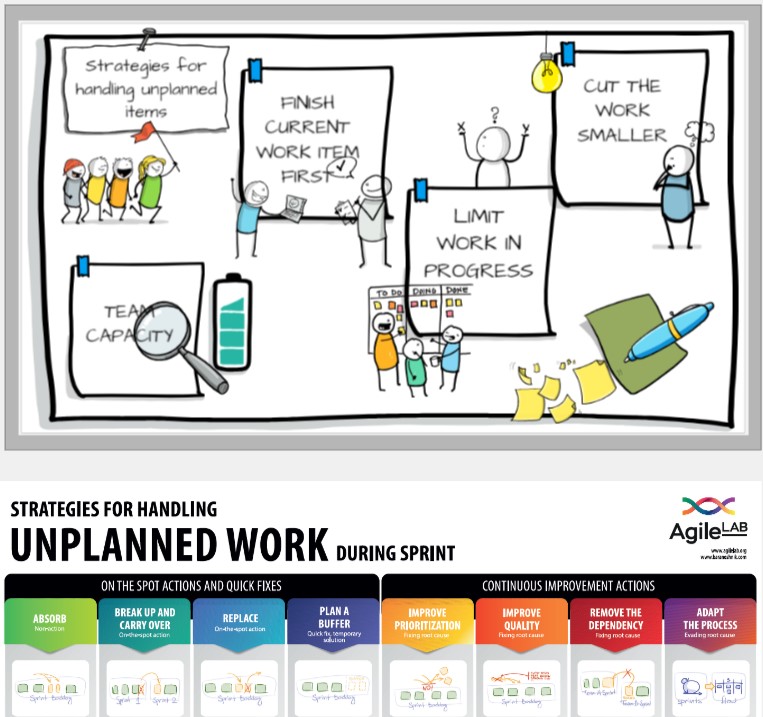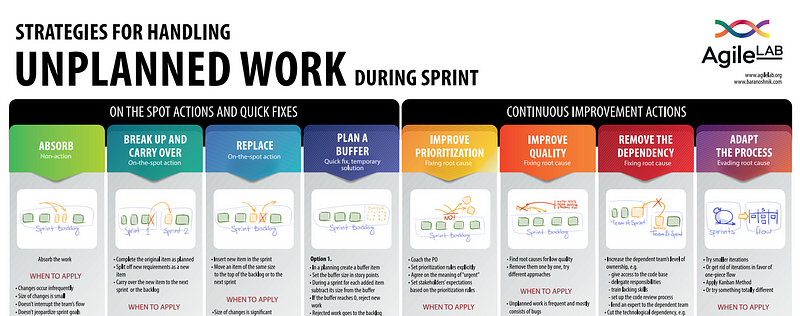In the dynamic world of Agile development, the one constant is change. Unplanned work is like an uninvited guest crashing your sprint party, and it can disrupt even the best-laid plans.
So, how do you handle the unexpected in a way that doesn’t derail your team? There are a few strategies but let’s dive into two of my favorite simpler options and some practical strategies for managing unplanned work effectively.

Option 1: Leave Room for the Unknown
Imagine trying to predict the weather a month in advance. It’s impossible, right? Similarly, planning for the unpredictable in Agile is challenging. But what we can do is make educated guesses based on past performance. How much of your team’s time in previous sprints was hijacked by unplanned work? Was it a rollercoaster of unpredictability, or did it follow a somewhat steady pattern?
Option 2: Leave Capacity Free, but Keep it Off the Board
If you’re looking to embrace a lighter touch, option two might be your jam. Here, we advocate for not loading the sprint to the brim but dealing with the unplanned work separately. By reserving a portion of your team’s capacity, you free them from the administrative burden of squeezing it into the Sprint Backlog.
Effective Strategies to Tackle the Unexpected
- Finish What You Started
When the storm of unplanned work hits, it’s tempting to drop everything and address it immediately. But hold your horses! Instead, complete your current task before moving on to the next highest-priority item. Why? Switching tasks prematurely leads to a collection of half-baked projects and an inability to provide value.
2. Limit Work in Progress
Just like you wouldn’t juggle a dozen balls at once, don’t try to manage too many tasks simultaneously. Reducing your work in progress enables you to pivot swiftly when the unexpected knocks on your door.
3. Cut Work into Bite-Sized Pieces
Chopping tasks into smaller, manageable chunks is like breaking down a colossal boulder into manageable stones. This approach enables you to complete your current task more quickly and respond more agilely to unforeseen challenges.
4. Communicate and Prioritize
Keeping the team in the loop is essential. Let your colleagues know when high-priority unplanned work emerges and explain why it demands immediate attention. Then, roll up your sleeves together and make sure everyone is on board.
5. Adjust the Plan
Agile is all about adaptation. Modify your sprint plan to accommodate the newfound priority item. Don’t be rigid; be agile.
6. Monitor Progress
Keep a watchful eye on the high-priority item’s progress. Is it on track to be completed within the sprint? Make adjustments as needed to ensure success.
7. Reflect and Learn
After the sprint, gather your team and reflect on the process of handling the high-priority item. What worked well? What could be improved? Use these insights to fine-tune your approach for future sprints.
Check out AgileLabs cheat sheet, which has fantastic techniques for managing AgileLabs Unplanned work cheat sheet.

Conclusion
In the ever-changing landscape of Agile development, embracing the unexpected can be a challenge, but it’s also an opportunity.
Whether you choose to leave room for the unknown within your sprint or keep unplanned work off the board entirely, these strategies will help you navigate the unpredictable with agility and finesse.
Remember, in the world of Agile, the only constant is change, and managing unplanned work is an art worth mastering.
